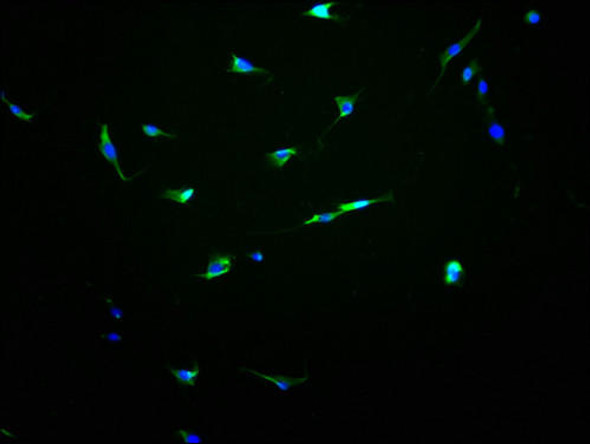Description
| Antibody Name: | SEPT10 Antibody (PACO13605) |
| Antibody SKU: | PACO13605 |
| Size: | 50ul |
| Host Species: | Rabbit |
| Tested Applications: | ELISA, WB, IHC |
| Recommended Dilutions: | |
| Species Reactivity: | Human, Mouse, Rat |
| Immunogen: | Human SEPT10 |
| Form: | Liquid |
| Storage Buffer: | PBS with 0.1% Sodium Azide, 50% Glycerol, pH 7.3. -20°C, Avoid freeze / thaw cycles. |
| Purification Method: | Antigen Affinity Purified |
| Clonality: | Polyclonal |
| Isotype: | IgG |
| Conjugate: | Non-conjugated |
| Synonyms: | septin 10;SEPT10;FLJ11619 ; |
| UniProt Protein Function: | SEPT10: Filament-forming cytoskeletal GTPase. May play a role in cytokinesis (Potential). Belongs to the septin family. 3 isoforms of the human protein are produced by alternative splicing.Protein type: Cytoskeletal; Cell cycle regulation; HydrolaseChromosomal Location of Human Ortholog: 2q13Molecular Function: protein binding |
| UniProt Protein Details: | |
| NCBI Summary: | This gene encodes a member of the septin family of cytoskeletal proteins with GTPase activity. This protein localizes to the cytoplasm and nucleus and displays GTP-binding and GTPase activity. A pseudogene for this gene is located on chromosome 8. Alternative splicing results in multiple transcript variants. [provided by RefSeq, Apr 2012] |
| UniProt Code: | Q9P0V9 |
| NCBI GenInfo Identifier: | 160400057 |
| NCBI Gene ID: | 151011 |
| NCBI Accession: | Q9P0V9.2 |
| UniProt Secondary Accession: | Q9P0V9,Q86VP5, Q9HAH6, B3KRQ9 |
| UniProt Related Accession: | Q9P0V9 |
| Molecular Weight: | 50,065 Da |
| NCBI Full Name: | Septin-10 |
| NCBI Synonym Full Names: | septin 10 |
| NCBI Official Symbol: | SEPT10 |
| NCBI Official Synonym Symbols: | |
| NCBI Protein Information: | septin-10 |
| UniProt Protein Name: | Septin-10 |
| UniProt Synonym Protein Names: | |
| Protein Family: | |
| UniProt Gene Name: | SEPT10 |
| UniProt Entry Name: | SEP10_HUMAN |






